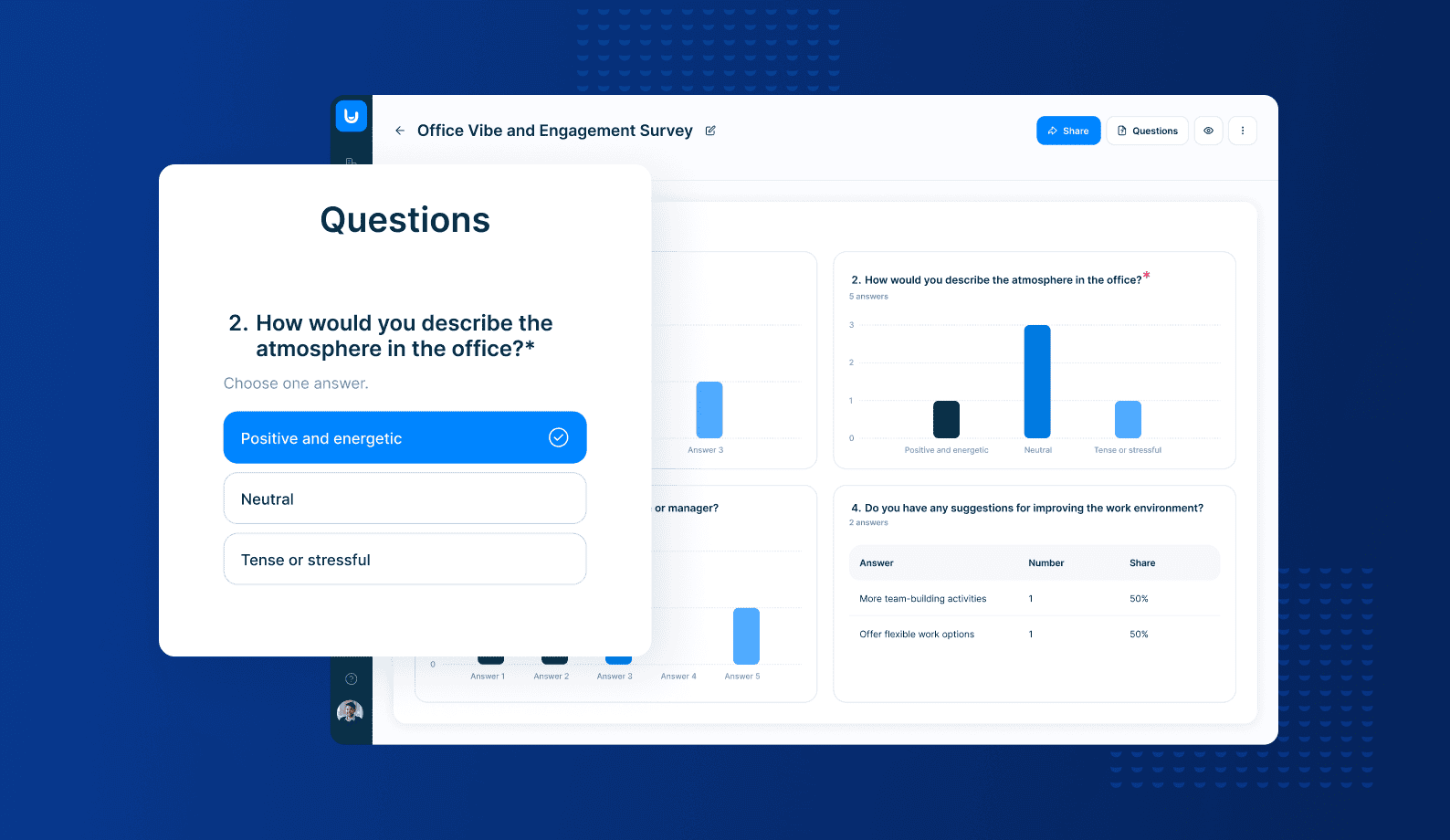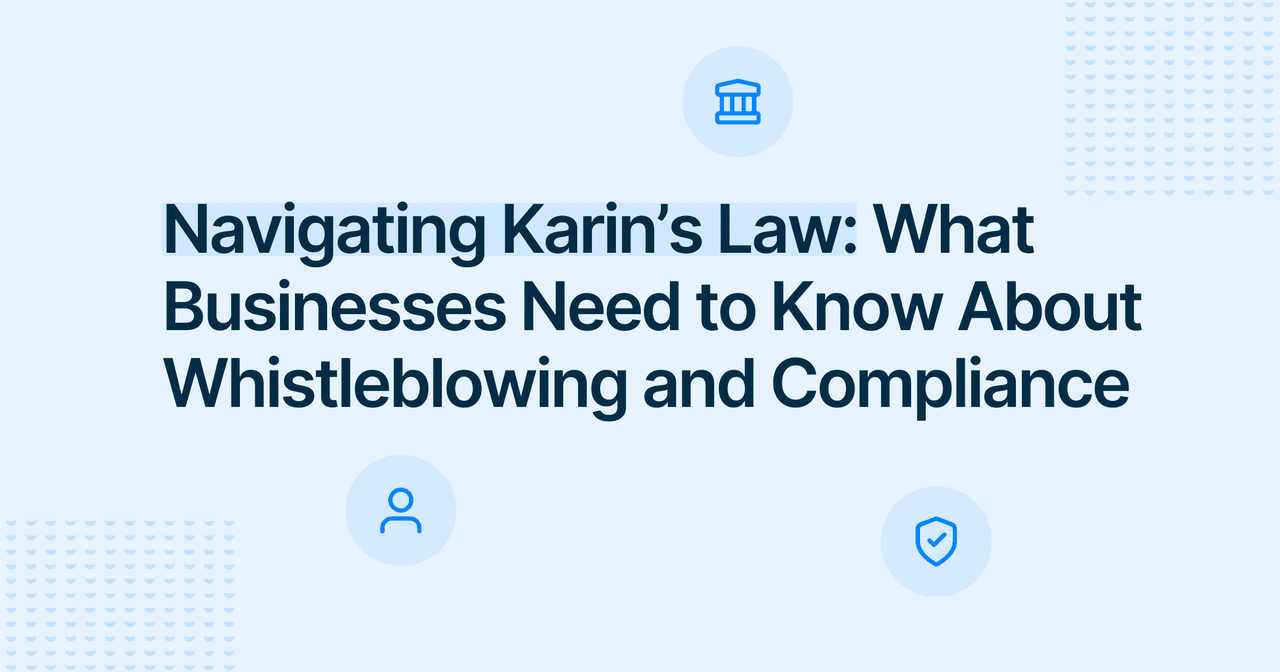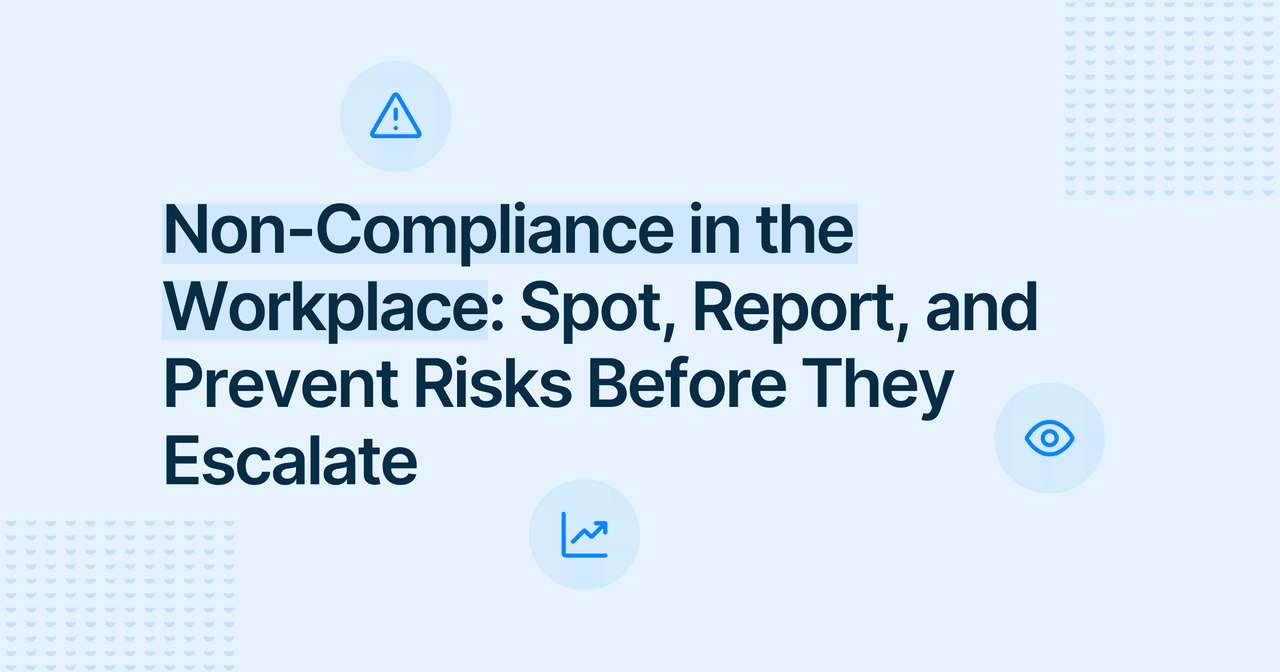What Is a Whistleblowing System?
Whistleblowing

Helena Jezkova
Marketing Manager
Published
2023-12-17
Reading time
6 min


Table of contents
Subscribe to our newsletter
A whistleblowing system is a channel primarily used by employees or other stakeholders within a company or organization to report instances of wrongdoing or unethical conduct. Whistleblowing systems can also be used more broadly as a way for individuals to submit their feedback, suggestions, or ideas for improvements.
These days, whistleblowing systems tend to be online, either as standalone solutions, or as part of HR software packages.
How does a whistleblowing system work in practise?
A whistleblowing system must provide a secure, reliable, and easy way to submit reports. When introducing a whistleblowing system, it is also important to consider that whistleblowers should have the option to submit reports in writing, orally, and in person.
In simple terms, whistleblowing systems are made up of the reporting stage and the investigation phase.
- The whistleblower uses a reporting form to submit their concern, idea or feedback.
- This report is received and handled by an authorized individual in the organization, sometimes called an assignee. This is set out in an organization’s internal whistleblowing policy.
- They may then go back to the whistleblower for more information in a series of follow up communication.
- Depending on the nature of the report, the assignee may escalate the issue to management and action may be taken against the perpetrator of the offense. The whistleblower will be notified of any action taken.
Whistleblowing platforms are equipped with features to make this process as easy and intuitive as possible.

The foundation of a whistleblowing system usually consists of specialized whistleblowing software like FaceUp, which has the advantage of being available anytime and anywhere, ensuring the safety of reporters, allowing ongoing communication after the report has been submitted, and offering easy and clear report management, including those received from other sources.
What are the benefits of a whistleblowing system?
The benefits of introducing a whistleblowing system in your organization are numerous and varied. They include:
- Empowering employees and other stakeholders to speak out when something is wrong.
- Promoting a culture of openness and transparency.
- Reducing costs incurred through fraud, theft, high employee turnover, legal disputes, missed opportunities, and others.
- Protecting your organization’s reputation by keeping issues private and out of the press.
- Preventing legal issues and the associated costs and reputational damage.
- Improved productivity as a result of a happier, more engaged workforce.
- Increased customer trust by demonstrating your commitment to an ethical workplace.
- Discovering previously unearthed areas for improvement.
- Remaining compliant with the relevant whistleblowing legislation in your region and any standards or certifications you have adopted.
Which companies need a whistleblowing system?
Clearly, all organizations would benefit from implementing a whistleblowing system for the reasons mentioned in the previous section.
If you are in the EU and your organization has more than 50 employees, you are legally obliged to introduce a whistleblowing system. You can read more about the EU whistleblowing directive here.
In addition, if your organization adheres to any standards and certifications, such as ISO 37001 or IATF 16949 etc., a properly functioning whistleblowing system is part of remaining compliant.
Should companies allow anonymous reporting?
One of the most important functions a whistleblowing system can have is that of anonymity. Allowing whistleblowers to submit reports anonymously is key to encouraging use of the system and in protecting whistleblowers from any potential retaliation or other negative impact on their professional life. Read more about the importance of anonymity for a whistleblowing system.
Usually, organizations are not inundated with reports, especially once the system has been up and running for a while. A good guide is that you can expect to receive in the region of 8 reports per 1000 employees each year.
How best to introduce a whistleblowing system into your organization?
Effective implementation of a whistleblowing platform is key to ensuring it is used.
This starts with communicating the very existence of the system via your usual internal communication channels and frequently reminding employees that it is there for them to use thereafter.
Your employees must be able to have access to all the information they need in order to speak out. This means educational materials i.e. prints materials, emails, training sessions and more. It’s crucial that employees know how to make reports, what protections they are entitled to, and what counts as reportable conduct.
A whistleblowing system isn’t a ‘one and done’ situation, it should evolve as your company changes and be updated regularly.
The final, but no less important, part of a whistleblowing system is properly informing employees and all interested parties of its implementation. The best way to do this is by adopting an internal whistleblowing policy that should:
- explain the importance of whistleblowing
- define the basic terms
- specify possible reporting methods
- explain who is covered by whistleblower protections
- describe the process for handling reports
- provide the name and contact information of the appropriate person
Need a whistleblowing policy template to get started? Download whistleblowing policy here.
Real-world experience of whistleblowing systems
At FaceUp, we love to hear real-world examples of whistleblowing systems being put into practice.
These use cases can be varied and surprising.
For example, sports equipment retailer SPORTISIMO discovered through FaceUp that they weren’t stocking women’s sizes for certain shoes and then remedied the situation.
The Brno-Centre Municipal Office used FaceUp’s whistleblowing system to unearth a long-standing case of bullying which, once resolved, led to an increase in productivity.
Industrial company Akka wanted to communicate more effectively with their employees and obtain feedback. Before implementing a whistleblowing system, none of their employees would raise anything for discussion in meetings. Now they use FaceUp to gather people’s thoughts and talk them through during meetings.
Read more about our clients’ experiences.
The best solutions on the market and whistleblowing system alternatives
There are many different solutions and whistleblowing system providers on the market in 2024. Here are some of the best and links to their G2 profiles:
- FaceUp Whistleblowing System
- Whistleblower Software
- Safecall
- EQS Integrity Line
- AllVoices
- SpeakUp
- WhistleB
- Ethico
- NotMe Solutions
- Whispli
What are the alternatives to implementing a whistleblowing system?
- Hotline
- In-person
- Ombudsman
All of the alternatives listed above have their issues, most notably the lack of anonymity. In theory, steps can be taken to provide a level of anonymity for email and hotline reporting, although in practice this can be hard for organizations to execute. An ombudsman has their benefits in that they are an impartial party, but the whistleblower still has to reveal their identity to them at the very least.
Other use cases of FaceUp Whistleblowing System
One of the significant benefits of a FaceUp Whistleblowing System is that it can be used for much more than just whistleblowing.
FaceUp can be effectively utilized in the following four key areas:
- ESG
- HR and employee satisfaction
- Legal and compliance
- Misconduct prevention
FaceUp Whistleblowing System can also be used as:
- An anonymous reporting tool
- An online suggestion box
- An ethics hotline
- A customer complaint tool
- An incident and observation tool
And can be employed also in the following use cases:
- Employee questionnaires
- Collecting stakeholder feedback (for example: onboarding surveys, employee satisfaction questionnaires, software implementation follow ups, safety feedback…)
- Approval management
- HR Case management
- Employee engagement
- Workplace investigations
- Code of ethics
- Confidential conversations
- Q&A platform
Who is a report assignee?
The key element of a whistleblowing system is the designated person who receives and deals with the reports. They are the only person who is in (direct) contact with the whistleblower and who is allowed to familiarize themselves with the contents of the report.
If requested by the whistleblower, report assignee must be able to receive the report face to face. In addition to evaluating the validity of the report, the assignee proposes solutions to the problem and is responsible for informing the whistleblower about the report's acceptance and outcomes.
Therefore, it is important to choose the right person. They should be knowledgeable about their rights and responsibilities, understand the legal requirements of whistleblowing, and have received proper training and education.
Employees from compliance and HR departments are usually appointed to this position, along with or corporate lawyers. If no suitable person is found within the organization, an external person can also be appointed. Moreover, it is possible, advisable even, to have multiple assignees and allocate them different areas of concern.
Are you looking for a whistleblowing system?
For a reasonably priced, feature-rich whistleblowing system with the highest level of security and usability, why not give FaceUp a try? Book a consultation with our whistleblower specialist today.

Keep Reading

Alaa El-Shaarawi2025-12-197 min
Company Ethics Policy: How to Set Standards That Guide Every Decision
Workplace Environment

Marie Roland2025-12-165 min
Navigating Karin’s Law: What Businesses Need to Know About Whistleblowing and Compliance
Whistleblowing

Alaa El-Shaarawi2025-12-087 min
What Is an Ethical Code of Conduct? The System Behind Ethical Behavior in Business & Healthcare
Workplace Environment

Alaa El-Shaarawi2025-12-058 min
Non-Compliance in the Workplace: Spot, Report, and Prevent Risks Before They Escalate
Legal & Compliance


